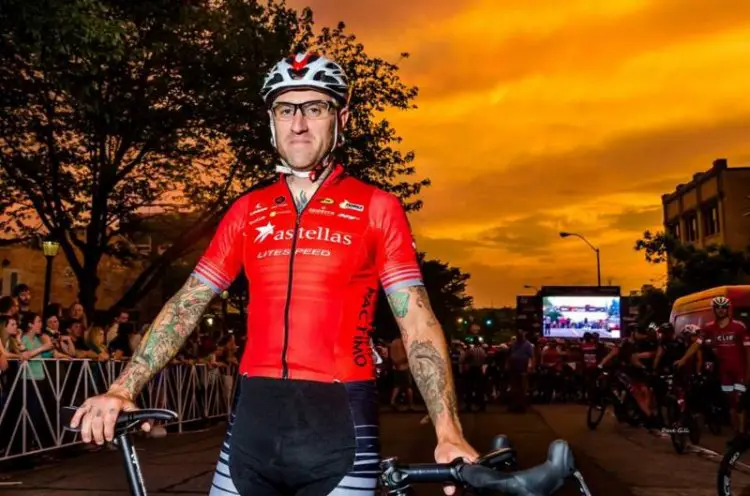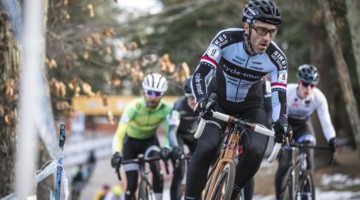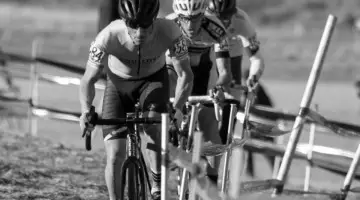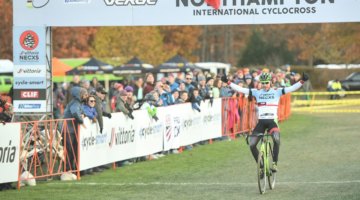Last week, Adam Myerson explained why riders shouldn’t fear a mid-season break, and examines what the body should feel like during the time off. This week for Technique Tuesday, he looks at what happens when the body begins to break down and get sick. While identifying over-training is important, Myerson looks at what can be done when a rider gets sick, and what they can do once they’ve recovered.
You can find other training ideas and articles at cycle-smart.com, as well as information on internationally-recognized coaching and clinic programs for all skill levels.
by Adam Myerson
It’s going to happen to all of us at some point in year. Things are going well, you’re on top of your form and riding strongly, and then it starts: scratchy throat, stuffy nose, itchy eyes– that’s it, you’re sick! Many riders make the mistake of over-training (or under-resting), depressing their immune system, and making themselves vulnerable in the first place, but also don’t give themselves enough time to fully recover from fear of losing fitness. It’s a recipe for an early end to your season. In this article, I’ll detail how to prevent getting run down and susceptible to illness, and how to rescue your form if it does happen.
If you’re getting sick and tired of being sick and tired, the first step is to identify it, own it, and ask yourself why. A heavy workload both on and off the bike without ample recovery puts more stress on your immune system than your body can handle, leaving you open to illness. Assuming you’re logging your training and have a record of your workouts, it’s important to also note information about your waking pulse, sleeping hours, descriptions of how you felt on your ride, how your day at work went, and how you recovered from the previous days workout. This is where small observations you make about your day can provide evidence later when viewed in the larger context of your training week and overall health.
Recognizing over-training when you keep a training diary can actually be pretty simple, but there are some general guidelines aside from data analysis you can follow to help keep you out of trouble. One is not to train more than three days hard in a row without taking an active recovery day. Another is to make sure you take one active recovery day for every day of racing, once you’re in season. Related, don’t include more than 2-3 days of anaerobic training in a single week, and that includes racing. Purely aerobic training often only takes 24 hours to recovery from as you eat back calories, but anaerobic work can take 48 hours or more as your body repairs muscle damage. Don’t be afraid to take as many recovery days as you need after a weekend of racing; training tired is definitely a shortcut to illness.
What can be harder to pinpoint is the non-cycling stress that can contribute to the over-training and illness equation. Training stress is a good thing; it’s the trial you put your body through to force an adaptation and in short, to get faster. Non-training stress can be equally hard on your body and requires recovery time, though, and is the part that many riders neglect to consider. If you’ve had a difficult day at work, difficulties with a personal relationship, or maybe spent the day traveling to or from an event or for work, that kind of strain on your body still needs to be accounted for. and won’t show up in a performance management chart. An all-day drive home the day after a race is not a recovery day; you need to recover from the drive itself, and recovery from the race is postponed because of the drive. Being slightly under-trained and under-fit but fresh and healthy is a more effective approach than over-trained, fit, sick and tired.
If the damage is done and you do find yourself sick, it’s important to try and limit your losses and not make things worse. The biggest mistake a rider can make is to try and train through sickness to keep from losing form. The small amount of form you might gain from the training is never worth the extra days you’ll stay sick from splitting your body’s energy between recovery from the training and recovery from the illness.
Normally, I recommend that clients take at least one and normally two days off the bike once a serious cold or similar illness sets in. It’s much more effective to spend that time napping, especially if you’re still going to work during the day. Once their illness has stabilized and isn’t getting worse, I’ll allow them to begin to ride a hour easy each day, mostly as a way to check in with their bodies and see how they’re progressing. The first day they wake up feeling better and get in one of those hour rides thinking they could have trained, I’ll normally allow real, structured training to begin again the following day. Not the day they feel good, but the day after, since riders are rarely honest with themselves about how much recovery they actually need and are usually so anxious to get going again.
When you do start with structured workouts again, it’s important to start at a level below what you were at when you got sick. Trying to pick up where you left off is typically more stress than your body can handle, too soon, and might leave you fatigued once again. Building back up slowly is the most effective approach, and there’s more form left under there than most athletes realize. Once you do get back into your routine, you might find that you feel surprisingly good from the forced rest; sometimes your body knows better than your ego. Finding the discipline to listen is probably the core of all successful training for athletic success.





























